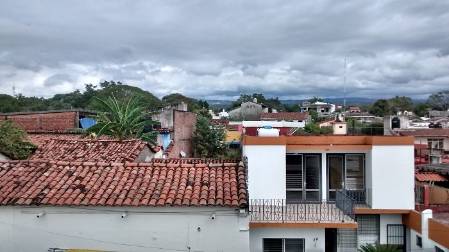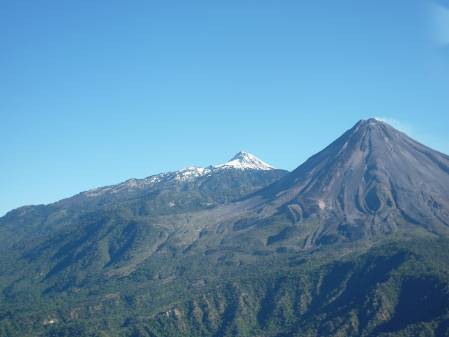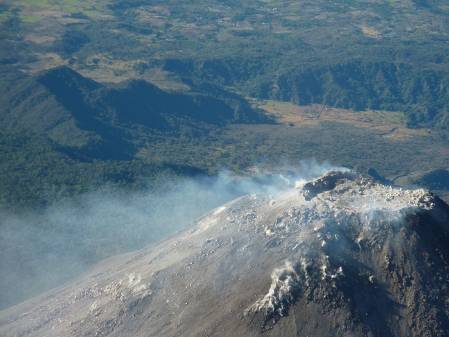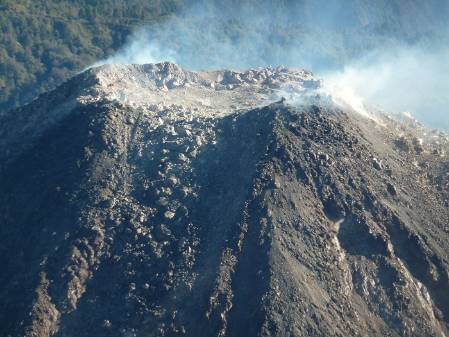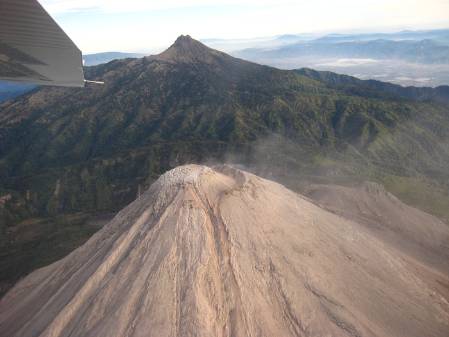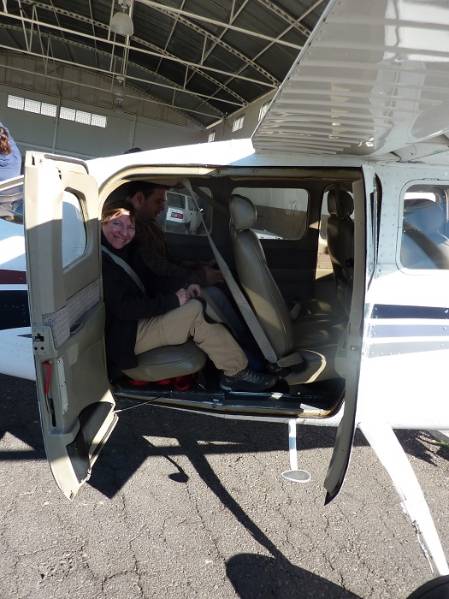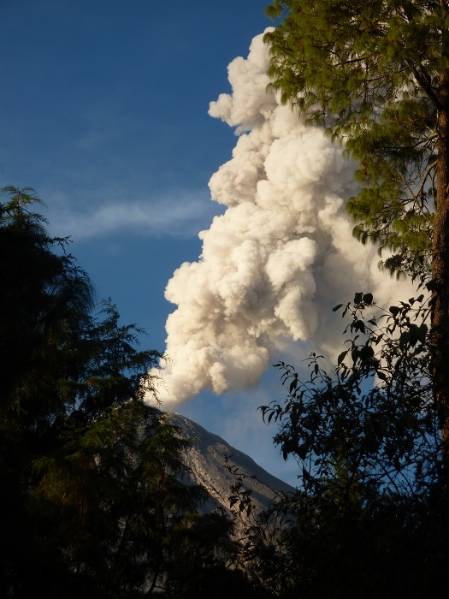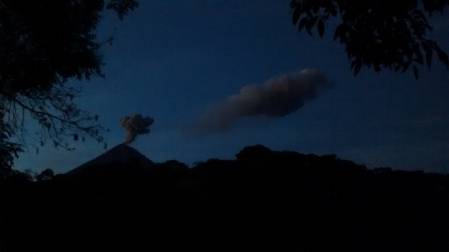A team of geologists from the Museum and Imperial College are in Mexico carrying out fieldwork at two of the most active volcanoes in the world: Popocatépetl (Popo) and Colima. Catch up with their adventures in this series of blogposts.
Popo times are over (never mind the blog title), but for Chiara and me the journey continues: Colima volcano, here we come! We have planned three days in Colima, and since winter in Mexico is generally a time free of clouds and rain, we are fairly confident that we will get some great shots of this impressive volcano. But alas!, as we arrive at the tiny Colima airport, we find that the view of Colima volcano is somehow underwhelming:
Harder than spotting lava at Popocatépetl's flanks: Whoever finds Colima volcano in this photograph is a true eagle-eyes and deserves an honorary display in the Museum's bird galleries.
The weather in Colima remains tropically hot, damp and cloudy for the next one and a half days. Chiara makes the best out of the bad conditions by giving a spontaneous talk about her work at the University of Colima, while I use the time to give you some background information about Colima volcano:
Fuego de Colima, as the volcano is called, has been very active in historical times. There were large eruptions about every 100 years in the past, which directly leads us to the alarming part of the story: the last major eruption took place in 1913! And the volcano has certainly woken up in the past few years, with volcanic domes - very viscous lava forming a plug in the crater - frequently being built and subsequently destroyed. (By the way, this is exactly the same type of activity as we see at Popocatépetl, even though the volcanoes are very different in other aspects.)
Fuego de Colima, and its snowcapped older sister, Nevado de Colima, form an impressive mountain mass towering above the State of Colima. Fuego de Colima has been very active in the past few months.
Especially since last summer, Colima has produced several small- to medium-sized eruptions every day; one of the largest since 2005 happened while we were peacefully collecting pumice at Popo:
It seems that Fuego de Colima is preparing for something bigger in the foreseeable future, and authorities are on alert in order to protect the ~300,000 people living in the vicinity of the volcano.
After intense rainfall during the second day, the weather clears in the evening, raising our hopes to finally see some action. And as it turns out, we get even more action than we were daring to dream of: we get offered a flight in a small airplane around the volcano on the third day of our stay. Obviously, this is an offer we can't refuse, especially after we are being reassured that the pilot is very experienced and knows how close he can get to the crater without getting into eruptive trouble. So off we go! Take a look at the stunning pictures we were able to take:
Colima volcano, airplane view: gases are constantly emitted from the crater region. The surface of this area is several hundred degrees celsius.
Even though there is some zoom involved in the picture, we are disquietingly close to the place where the explosions happen. The channel in the foreground of the picture is in fact a lava flow descending Colima's SW flank.
A steamy view to the North, with the newest lava flow going down the left side of the picture. The very top of the volcano is a flat or even slightly concave surface (just as a proper crater should be)…
…In December 2013, the summit looked very different. Here, we can see a fully intact, hemispherical dome. The explosions that have taken place since then have literally blasted off the cap of the dome.
After the flight: Chiara is happy about what she has seen, as well as about being safely back on solid ground.
As soon as we are back at the airport, the volcano starts an impressive performance of steam and ash emissions. We congratulate ourselves that we are not in an airplane above the top right now and take more pictures!
This eruption column is about 4 km high and contains very little ash, as can be gathered from the bright colour. However, if you look closely, you can see some ash falling out of the cloud towards the ground.
Night falls, and Fuego de Colima continues its show.
We could show you plenty more pictures of Colima erupting, since it continued similarly throughout the rest of our stay (and is still ongoing!) and we were quite trigger-happy. But this blog entry is already quite long, so if you want to see more of Colima volcano, we would like to refer you to the freely accessible webcam that delivers live, high-quality pictures right to your computer screen. As I said, there are several eruptions like the ones shown above every day, so if you spend some time with it, chances are that you will be live witness of a proper volcanic eruption!
Sadly, our time at Colima is already over now, and also our field campaign draws to a close. Stop by here shortly for final, picturesque remarks about our work in Mexico.



